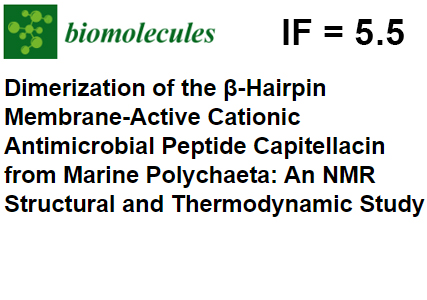
NMR spectroscopy reveals patterns and thermodynamic parameters of dimerization of β-hairpin antimicrobial peptides in the membrane
Oligomerization in bacterial membrane is a key step in many proposed mechanisms of antibiotic action of antimicrobial peptides (AMPs). Thermodynamics of the dimerization process of β-hairpin AMPs in a membrane-like environment of DPC micelles was studied using the example of the capitellacin peptide from of the marine polychaete Capitella teleta. Transitions between the monomer and dimer states with changes in temperature and detergent concentration were described by NMR spectroscopy. Both structural forms of capitellacin bind to the micelle surface, which is consistent with the “carpet” mechanism of membrane action. A comparative analysis of the physicochemical properties of β-hairpin AMPs revealed a positive correlation between the hydrophobicity of the peptide, the stability of its dimers and hemolytic activity. The results of the work were published in the journal Biomolecules. Learn more
10 апреля 2024 года

